A Weekend on St Kilda by Tim Haines
St Kilda is a dream location for many sea kayakers, but not many people get there as it’s fairly remote and quite exposed. I got very lucky, and was able to make the crossing from North Uist, circumnavigate the islands and then paddle back.
My plan was simple: book cheap accommodation on North Uist for a fortnight, arrange to work remotely, and then—if the weather looked suitable—book a few days off work and paddle over to St Kilda and back. A week prior to setting off I nearly cancelled the whole thing as the forecast was unremittingly grim, but I went anyway, steeling myself for disappointment.
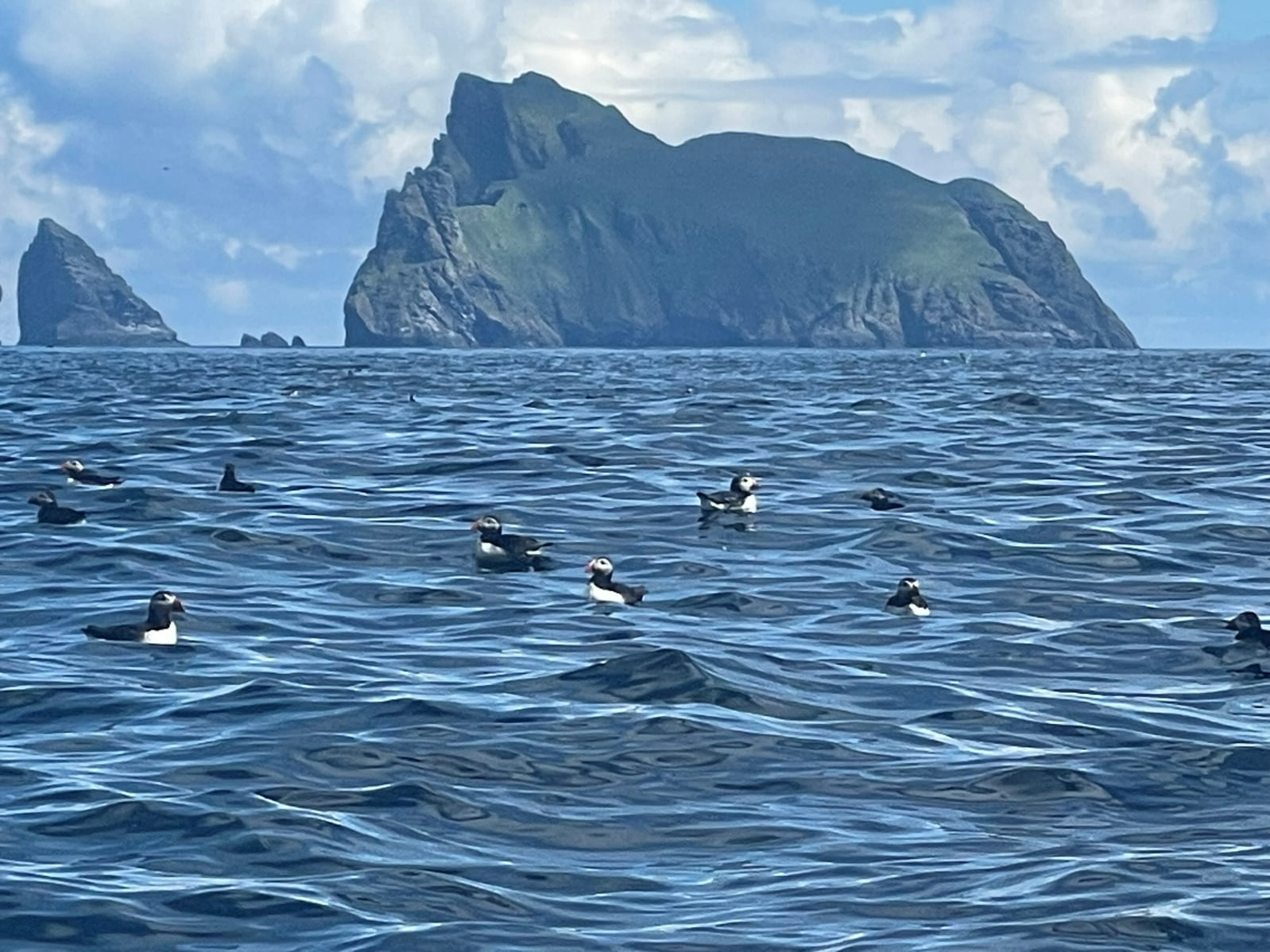
On arrival the weather was lovely, and I paddled around Rònaigh in bright sunshine before a big storm came in. My contingency plan was to have a go at sailing in an old Klepper (A big, stable, wood-and-canvas kayak), but my deficiencies as a sailor were immediately apparent. It looked like the whole thing was going to be a complete wash-out. I had almost given up hope when a weather window opened—four consecutive days with low winds—sufficient to make the crossing.
The recent storm meant that there was still a biggish (>4m) swell coming in from the West, but the bay at Hougharry is protected from the surf. As the wind was due to drop off around 9am, I had a leisurely start to the day. It only gets dark at around 11pm at this latitude, and it is still light enough to paddle through the night, if necessary. There was no rush.
The lie that I tell myself most frequently is that, starting tomorrow, I will stretch properly on a regular basis. I have been intending to take up yoga for over two decades now, but have never quite got around to it. So, anticipating the long crossing ahead I did a few token stretches in the hope that this may somehow, magically, make up for years of neglect.
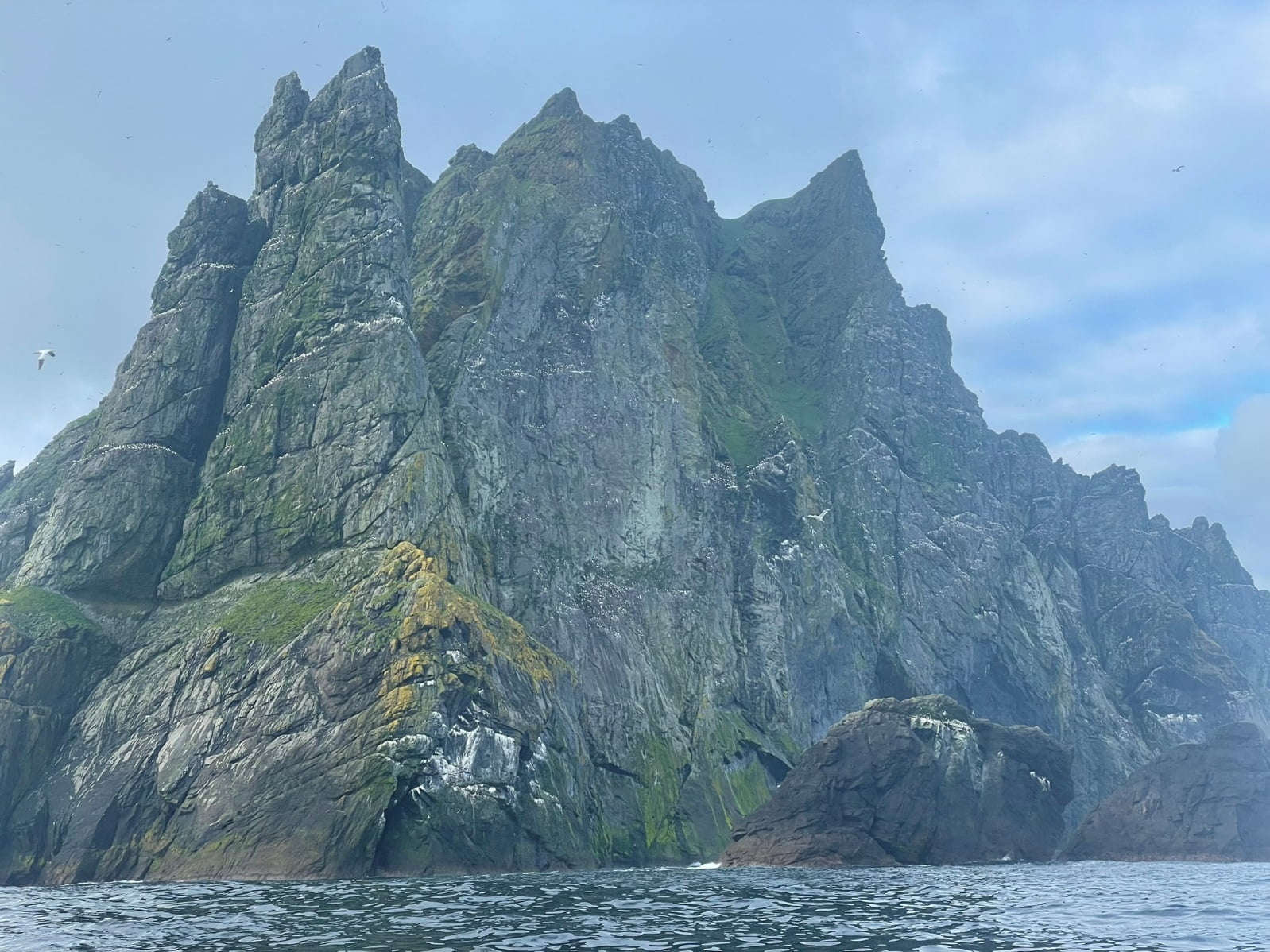
The swell was a little unnerving at first but the oncoming walls of water just slid beneath the boat with no ill effect. From the crest of the swell, Haskeir was clearly visible and I paddled off in that direction until St Kilda was periodically visible on the horizon, and then I tweaked my bearing slightly to head for the main island, Hirta.
There is, in truth, not a great deal to be said about open crossings. They are (in my opinion) a wonderful, awe-inducing and sometimes psychologically testing experience (I’ve written a bit about this before, here*), but they do not really have the elements required of a narrative arc. A good crossing should be uneventful, which is quite the opposite of what you want from an exciting account of an expedition. Suffice to say that on this occasion, the crossings in both directions were admirably unexciting.
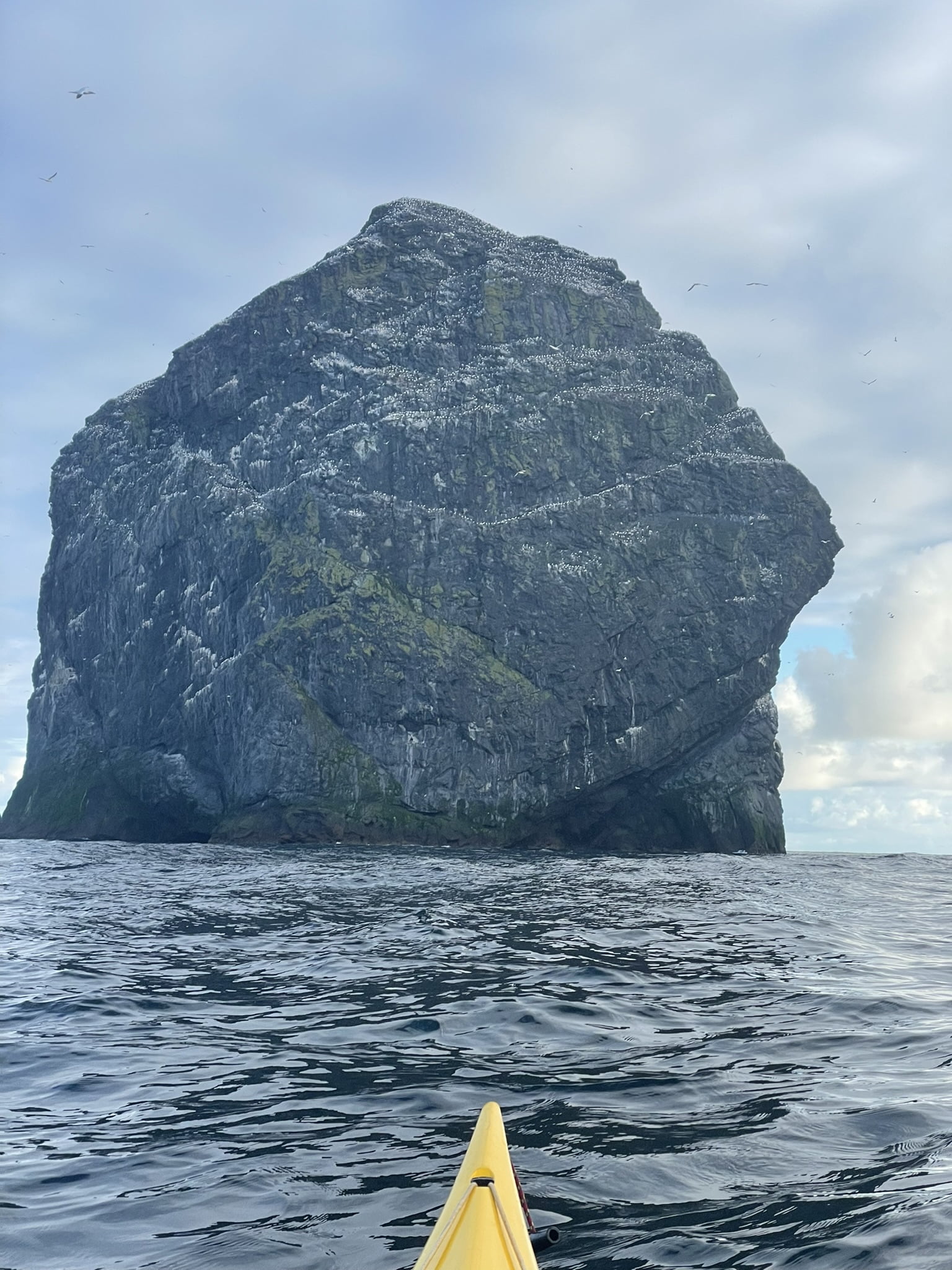
Arriving in Village Bay, the combination of stiff legs, a small swell and the deceptively steep angle of the slipway resulted in a comedy disembarkation. One of the NTS wardens stood on the shoreline and watched politely as I did a passable impression of a new-born giraffe attempting to take its first steps, until eventually I was able to drag the boat clear of the waterline. A top tip for anyone undertaking this paddle in future: the landing just beyond the jetty on the right-hand side of the bay as you approach makes a far better landing!
The warden later expressed disappointment, as when she had first observed my ‘paddle-flash’ on the horizon, she had mistaken me for the first basking shark of the season. Naturally, I offered my condolences and apologised as best I could for belonging to such a mundane and ultimately disappointing species.
The crossing had taken nearly twelve hours, but before I could sleep I had to secure all food in air-tight metal tins provided by the warden. The island has a large population of a unique sub-species of field mouse – these podgy little creatures have a voracious appetite and will gnaw through dry bags and kayak hatches in search of easy calories. It was well past midnight before I got to bed.
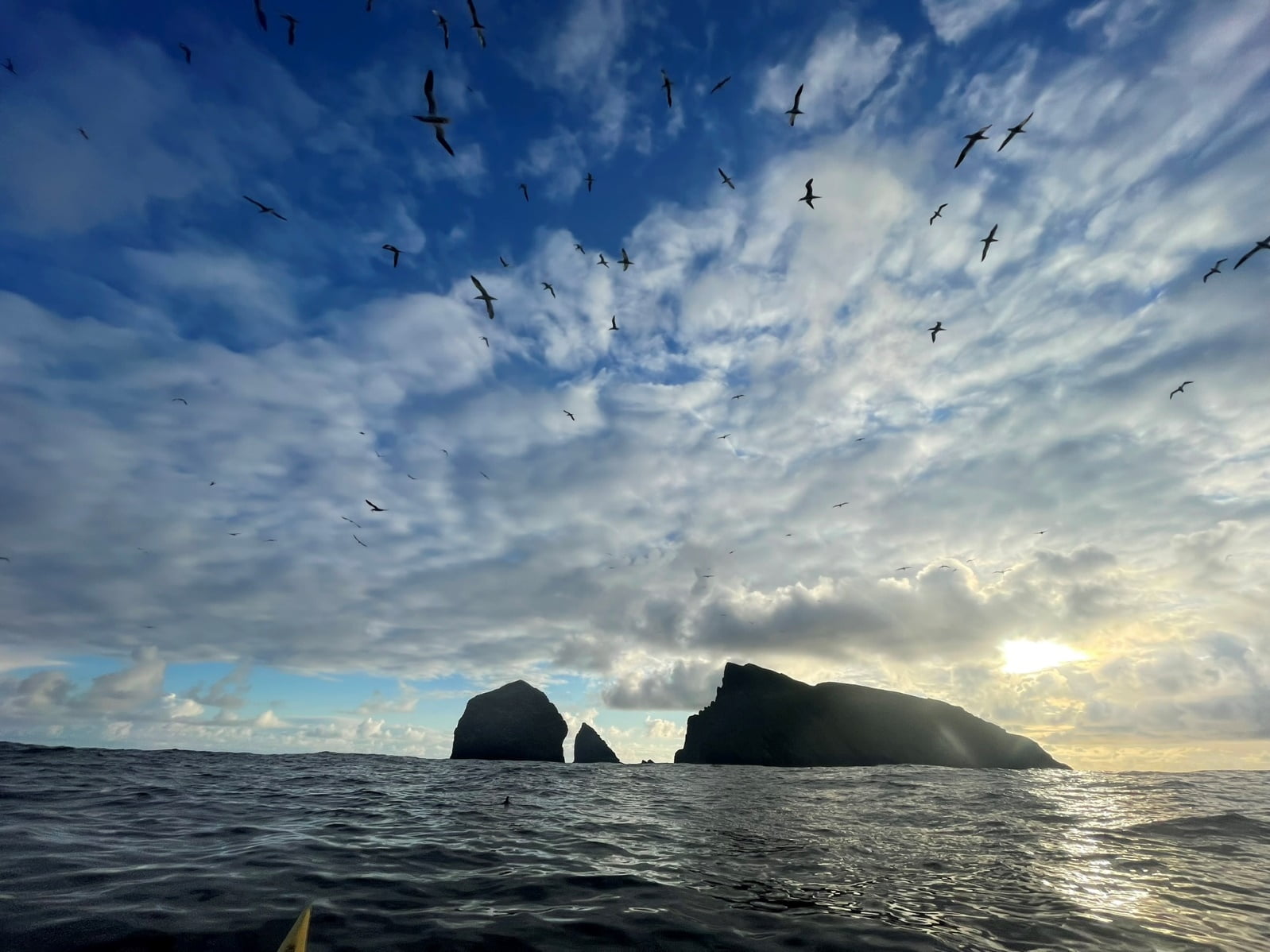
In the morning I walked up to the ridge line at the top of the island. It was surprisingly busy as tourist boats were dropping off a steady stream of day-trippers. I bumped into a friendly chap who had sailed over on a trimaran with a couple of friends. He, like me, had spent much of the Covid lockdowns reading about St Kilda and dreaming, and had finally been gifted an opportunity to act out those dreams with open eyes. His difficulty believing that I had made the crossing in a kayak did terrific things for my ego.
Unfortunately I had only been on the ridgeline for half an hour or so before a thick clag descended and visibility fell to less than 50 meters. I descended cautiously and spent the remainder of the day eating, reading and napping. It was lovely.
The following day I was on the water early, heading for the island of Boreray and the nearby sea-stacks, seven kilometres north-east of the main Island. These stacks house one of the largest Gannet nesting sites in the world, which was a vital food source for the population of St Kilda prior to the evacuation of the Islands in 1930. The local men would climb the stacks to collect eggs and young birds which were considered a delicacy. The sky was crowded with wheeling birds and I paddled looking up at the imposing vertical stacks with a serene sense of other-worldliness. I was brought back to reality with a jolt as one of gannets scored a direct hit in their own version of the game ‘battleships’. I was glad I had a hat on.
On the way back from the stacks, I saw multiple airborne muggings. Bonxies, the disreputable thugs of the avian world, smashed into the delicate and precise Gannets in mid-air, bringing them down to the water and forcing them to abandon their catch. With my eyes focussed on the skies above, it was the noise of forceful exhalations, and a pungent, fishy stench that made me aware that there was action in the water too: multiple Minke whales surfaced around the boat. This is what expedition paddling is all about and it was heavenly. A squall passed through leaving behind a vivid rainbow, confirming somehow that I was in exactly the right place at exactly the right time, and that all the natural world was choreographed to perfection around me.
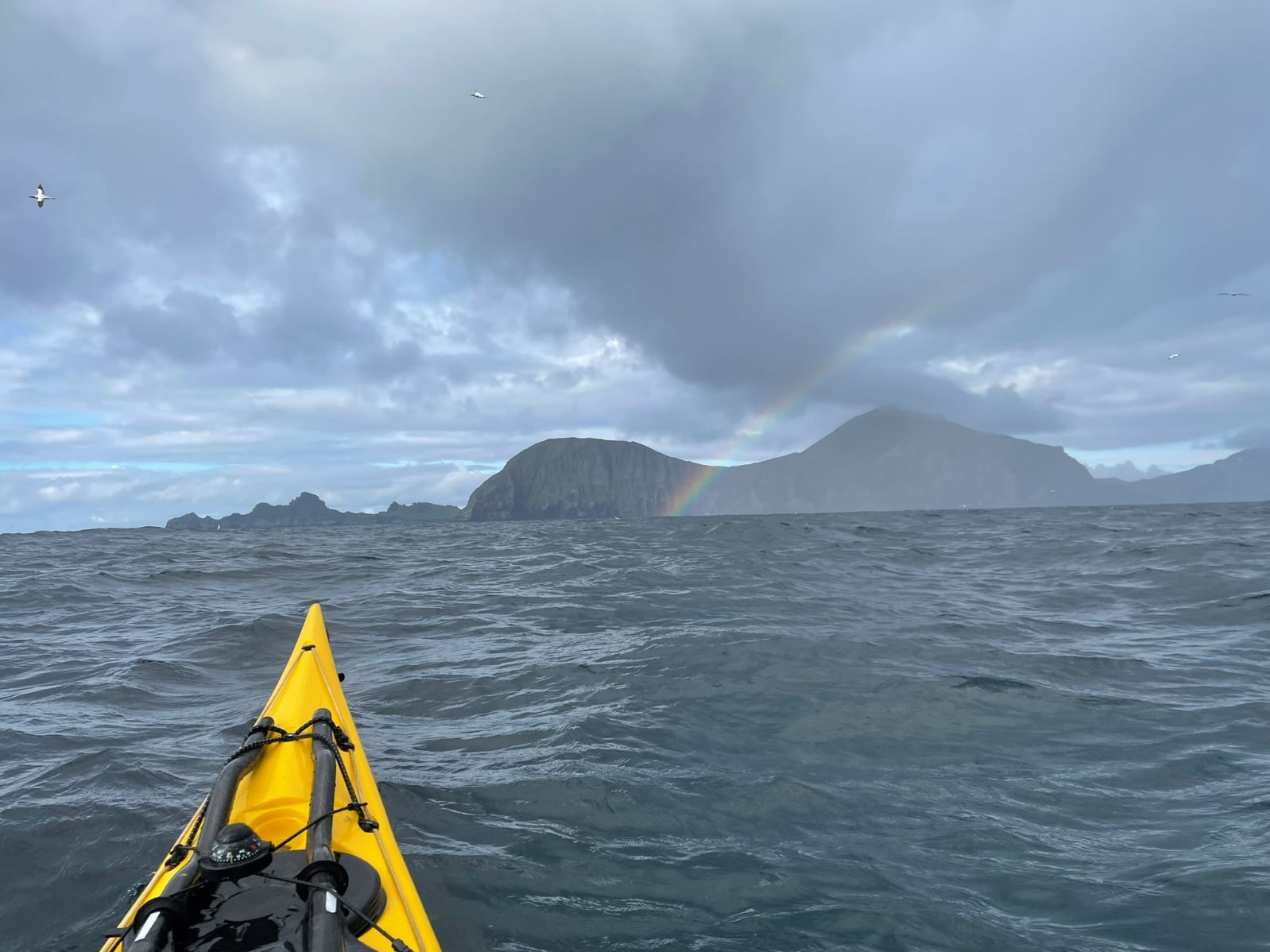
Arriving back at the main island, Hirta, I set off for an anti-clockwise circumnavigation. The island is a Swiss Cheese of caves, arches and tunnels, some of which are interlinked. Conditions were good, and a more confident paddler would have explored some of them, but I made a conscious decision not to. The potential implications of an error of judgement here could be disproportionate to any reward. I would, however, love to go back with others and explore this stunning coastline more fully. I arrived back in village bay at mid-day to re-engage with my punishing schedule of eating, reading and napping. Tomorrow would be another long day, so I felt justified in conserving energy.
That evening several boats arrived in Village bay, and one of them immediately off-loaded several kayaks. I was briefly affronted on the entirely specious grounds that they hadn’t earned their place in this paradise by paddling over. These were not True Pilgrims! On reflection, however, this was a silly, thin veneer to disguise my envy: the idea of exploring the coastline with the additional time and safety provided by a mothership appeals intensely.
That night, a large blister on one of my fingers was quite painful. Strangely, it was just the one blister and the others were fine. Was it infected? If so, what did this mean for the following day’s paddle? I fretted about the potential implications but ultimately decided that the only sensible thing I could do was apply some antiseptic cream and have some paracetamol. I was back asleep within half an hour, and in the morning it was fine.
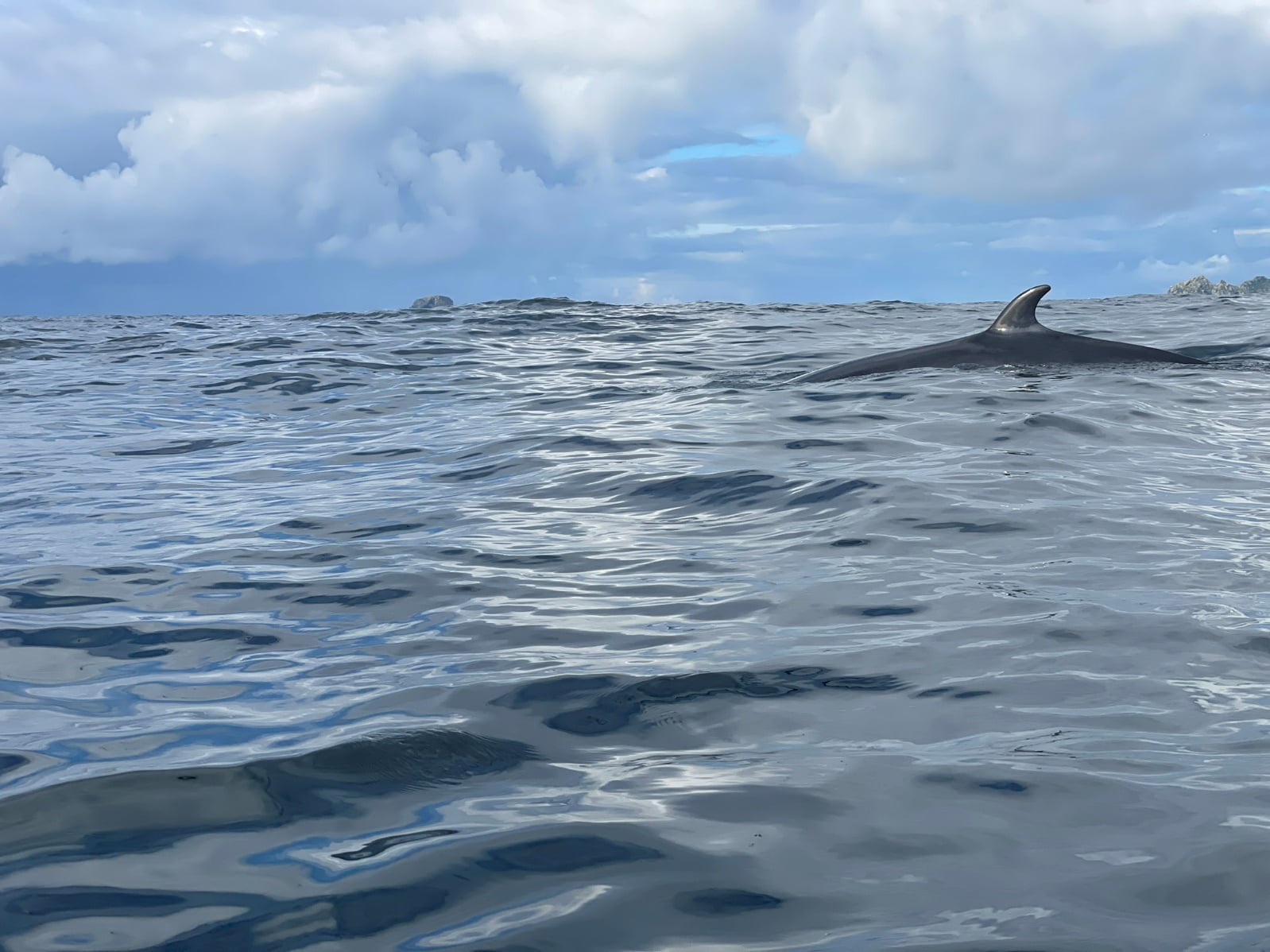
Sea kayak paddlers talk a lot about Type 1 vs. Type 2 fun. Put simply, ‘Type 1 Fun’ is ‘normal’ fun, which is fun when you’re doing it. ‘Type 2 Fun’ is enjoyable only in retrospect, after the event. In my experience, most expedition paddlers tend to be gluttons for Type 2 Fun.
My pointless fretting over a blister made me consider an analogy: Type 1 Fear, vs. Type 2 Fear. In this analogy, Type 1 Fear is useful as it spurs us on to do something constructive. A rush of adrenaline provides momentary strength and mental clarity to get through a difficult situation, or a longer-term fear about your ability to complete a forthcoming challenge forces you out of bed every morning to get the training miles in before work.
Type two fear, on the other hand, is a shitty, miserable and debilitating thing. This is the fear that freezes me rigid in an ineffectual high brace as I get tumbled by a breaking wave. This is the insidious fear of impending old age and decrepitude that is somehow strong enough to keep me awake at night, yet insufficient motivation to do anything about it. I strongly suspect that the ability to convert Type 2 Fear into Type 1 Fear may be one of the keys to a happier and more fulfilling life. For me, this is a work in progress.
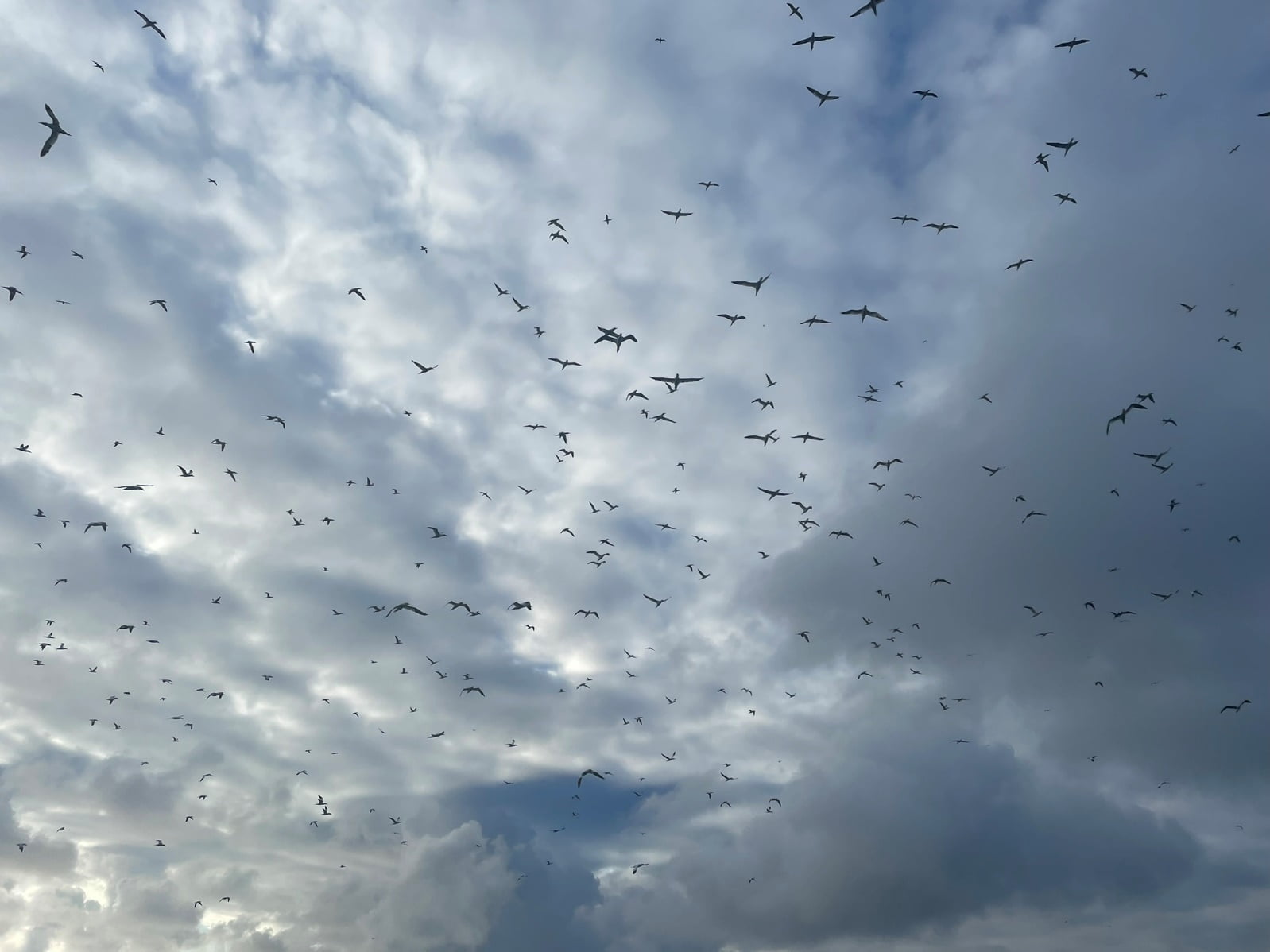
Back to more practical considerations. The weather for the return journey was perfect: low wind, a little overcast but with occasional bursts of sunshine. The gentle swell was travelling with me. I did not paddle fast, but it felt good: person, boat, paddle and water were all acting in concert on the Big-Wide-Open. I am not a particularly spiritual person, but this… this is it… this is the good stuff… this is what we live for. To not experience some tingle of awe in such a situation would be a frank admission of emotional bankruptcy.
There have been comparatively few kayak crossings to and from St Kilda. I think this is largely accounted for by the remoteness of the start point, and the unpredictability of Hebridean weather. I was lucky. It would be very easy to spend a fortnight watching horizonal rain on North Uist.
I am neither a massively experienced sea kayaker, nor am I particularly physically fit. Therefore I am confident that, with a reasonable training programme, most kayakers could complete the crossing safely. It would then be luck—manifest as weather—combined with sound judgment, which would determine whether or not you set out. On the other hand, I suspect that a mind-set that relishes the prospect of solo kayaking in the wilderness may require some form of innate psychological dysfunction.
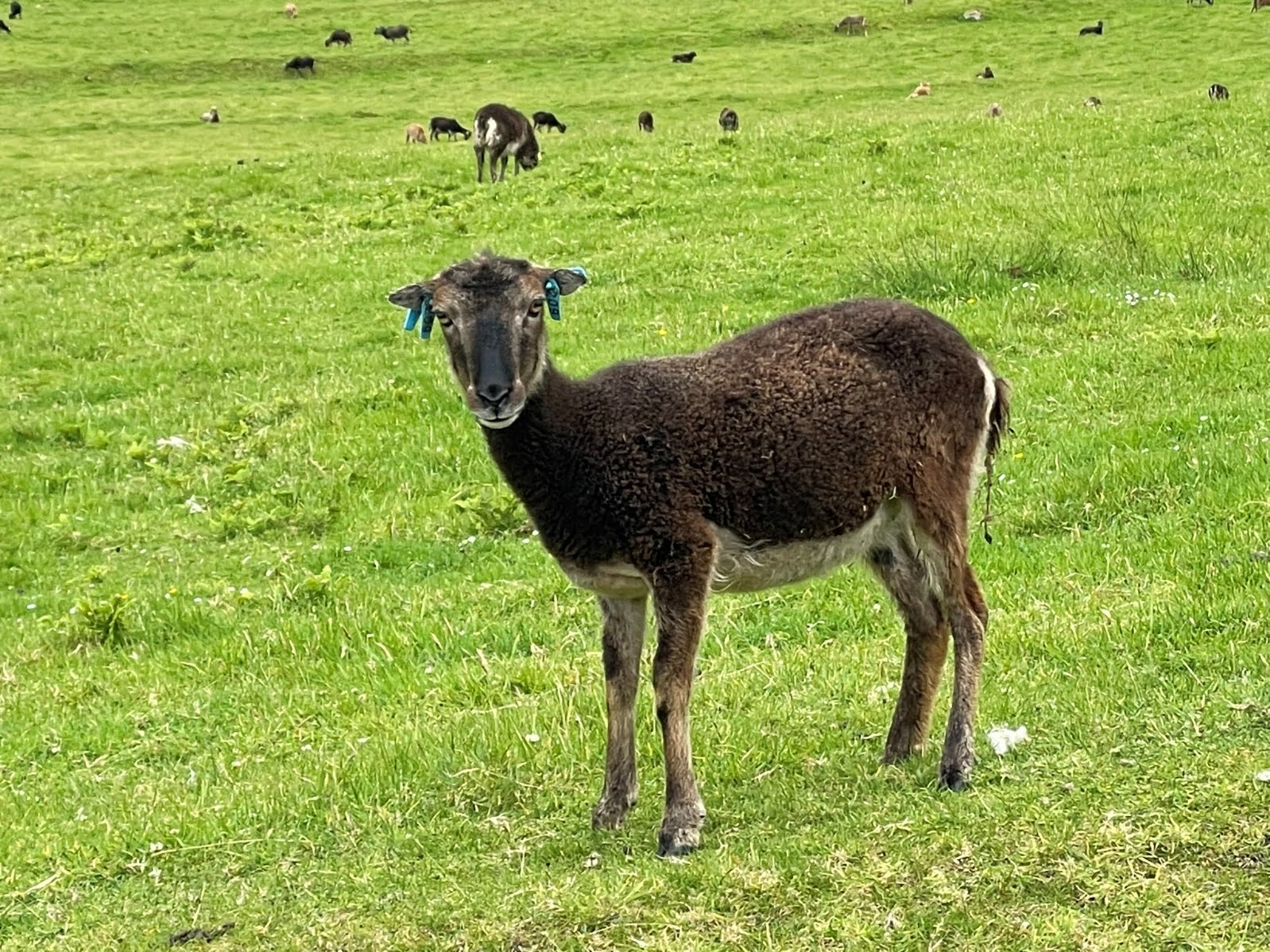
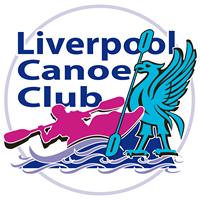
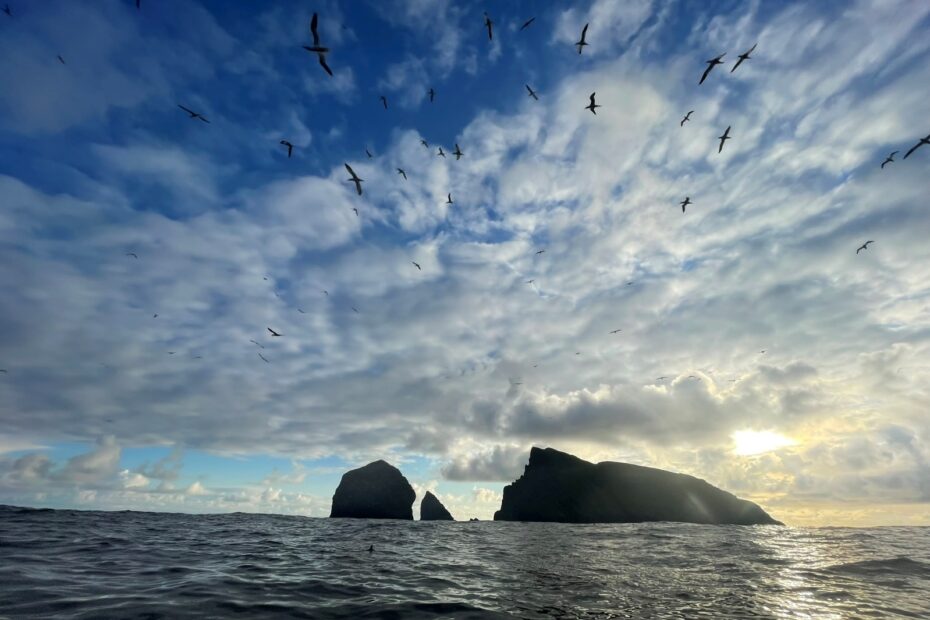
Such an inspiring trip Tim. A report I’m sure I’ll keep coming back to. Thanks for sharing.
I agree with Eamon. This was not only a great trip for you, Tim, but by allowing us to share it, through your trip report, we can all take inspiration from it. I will also keep going back to it – and dream.
Agree with Eamon and Roger. Great report. Very honest and at the same time inspiring. There might be a book there Tim! Maybe when you do your circumnavigation of the British Isles🤣👍